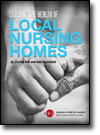Tag
Illinois
-
Documents yield true cost of Illinois’ PR campaign for insurance coverage
When Illinois awarded a $33 million contract to a high-priced PR firm to promote insurance coverage under the Affordable Care…

-
•
Americans unprepared to pay for long-term care
In the Chicago Tribune, Deborah Shelton examines how unprepared Americans are to pay for their own long-term care needs as…

-
•
Cash-strapped Ill. goes after hospitals’ nonprofit status
A New York Times article written by Bruce Japsen, an independent journalist writing for the Chicago News Co-Op, digs into…

-
St. Louis reporters find felons practicing medicine
The St. Louis Post-Dispatch‘s Blythe Bernhard and Jeremy Kohler tell the story of an ophthalmologist to show how a convicted…

-
•
Community-led effort sparks public health wave
Writing in The New York Times, Jessica Reaves writes about how a 2000-06 Chicago community survey embodies the block-by-block, community-reliant…

-
•
Outpatient inspections show serious lapses
AP medical reporter and AHCJ board member Carla K. Johnson used FOIA requests to uncover a wealth of infection-control violations…

-
•
Foe of degree mills sets sights on medical school
David Wolman, writing in Wired, chronicles the efforts of an Illinois physics professor, George Gollin (bio), to topple a $7…

-
•
Tribune investigates nursing home psychiatrist
In the latest installment of the Chicago Tribune‘s investigation into Illinois nursing homes, Sam Roe and ProPublica’s Christina Jewett investigate…

-
•
Is community research oversight flawed?
America’s 400-plus designated Community Research Sites receive much less attention than the massive academic research hospitals, but conduct the bulk…

-
•
Trib looks into dangerous nursing home residents
The Chicago Tribune‘s Gary Marx and David Jackson examined the effectiveness of Illinois regulations implemented in 2006 to protect nursing…



